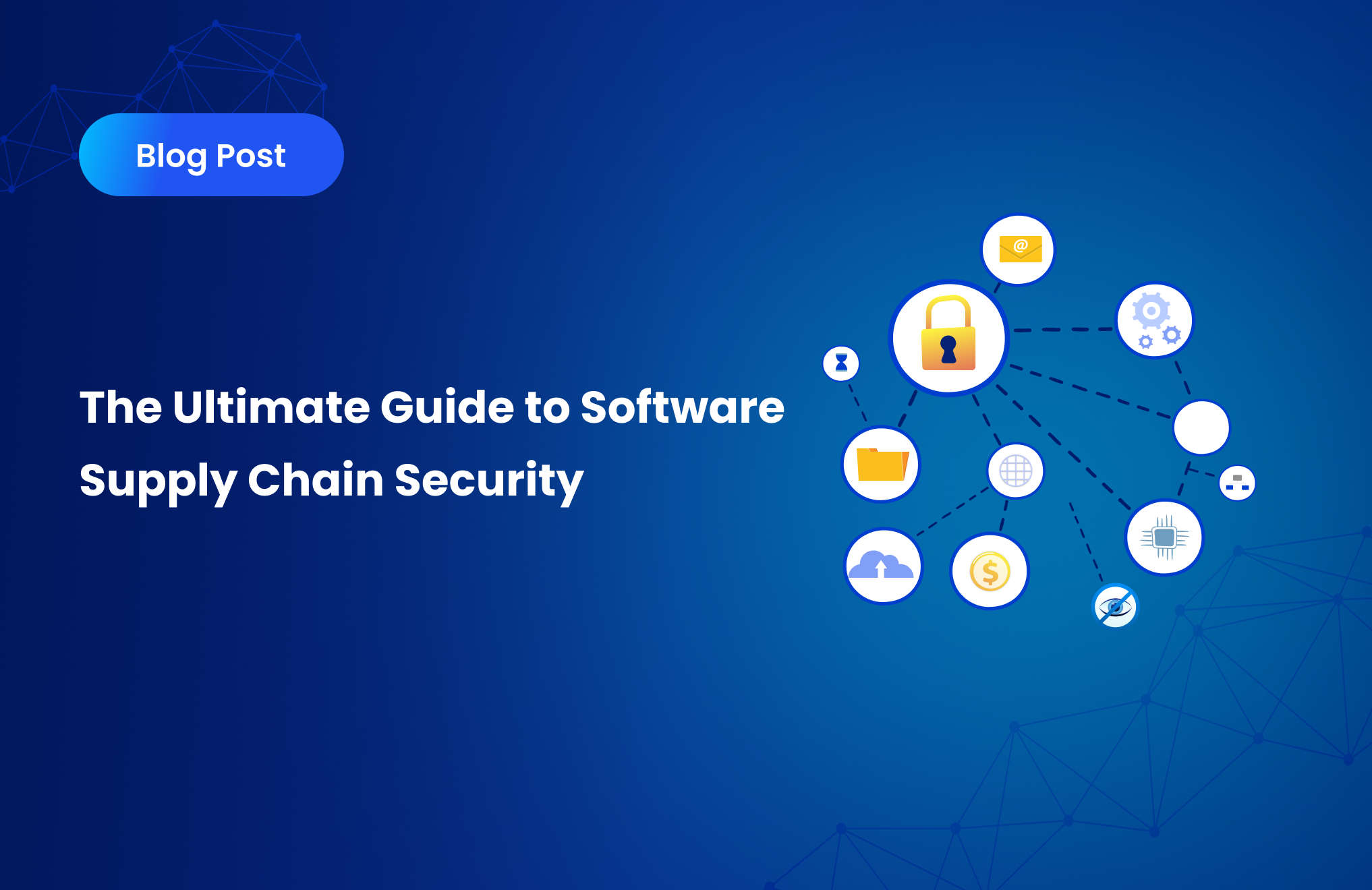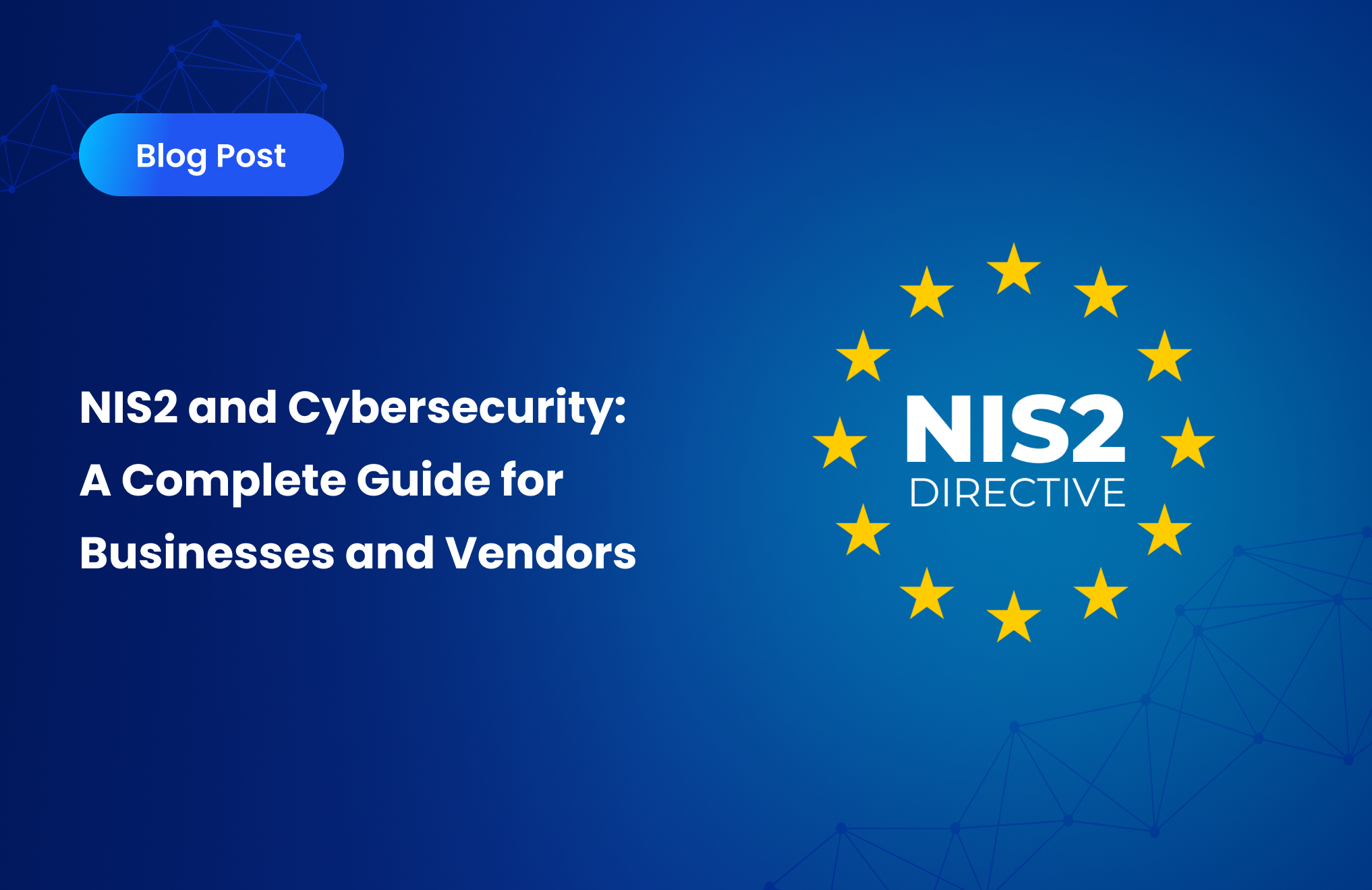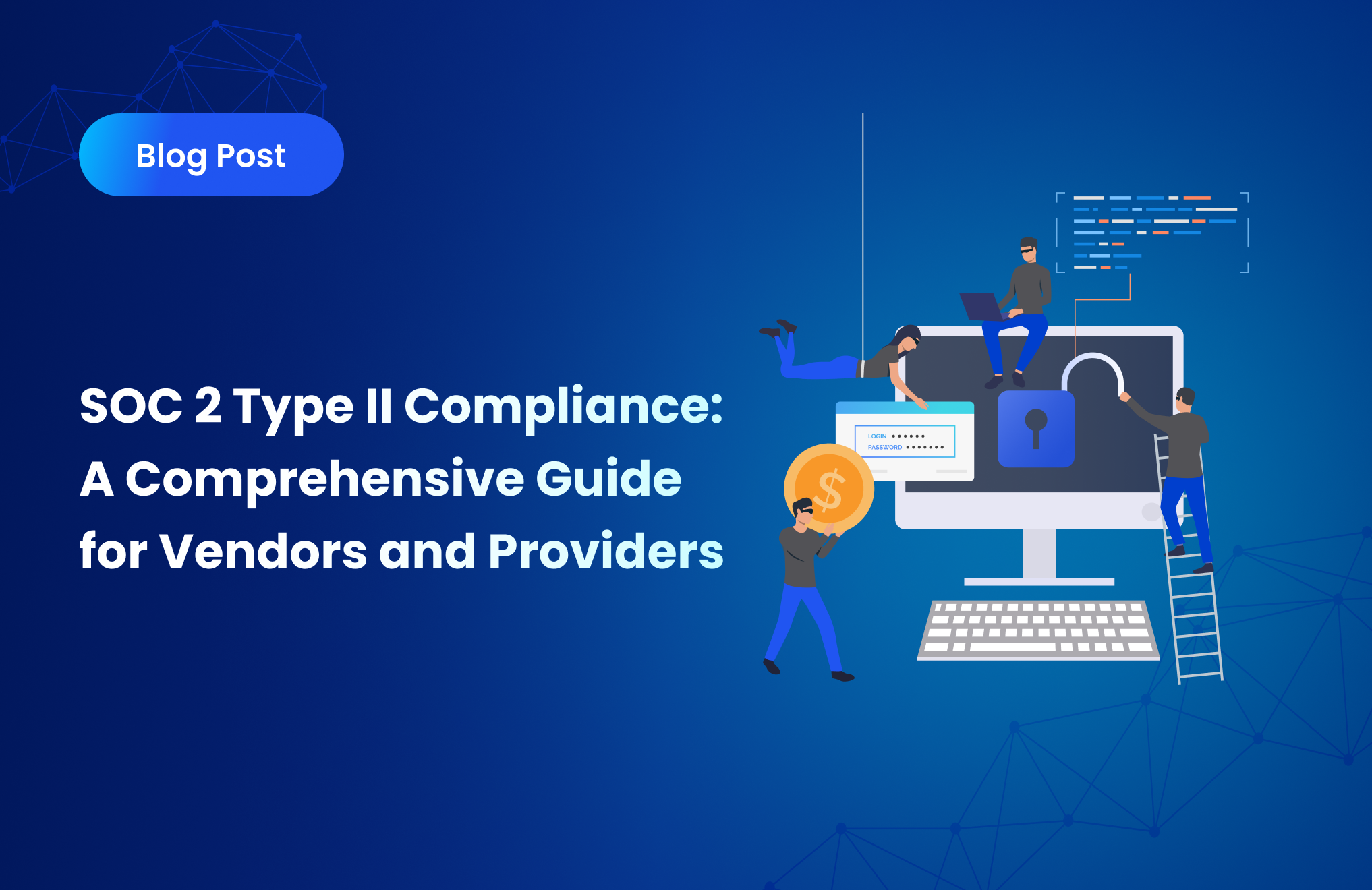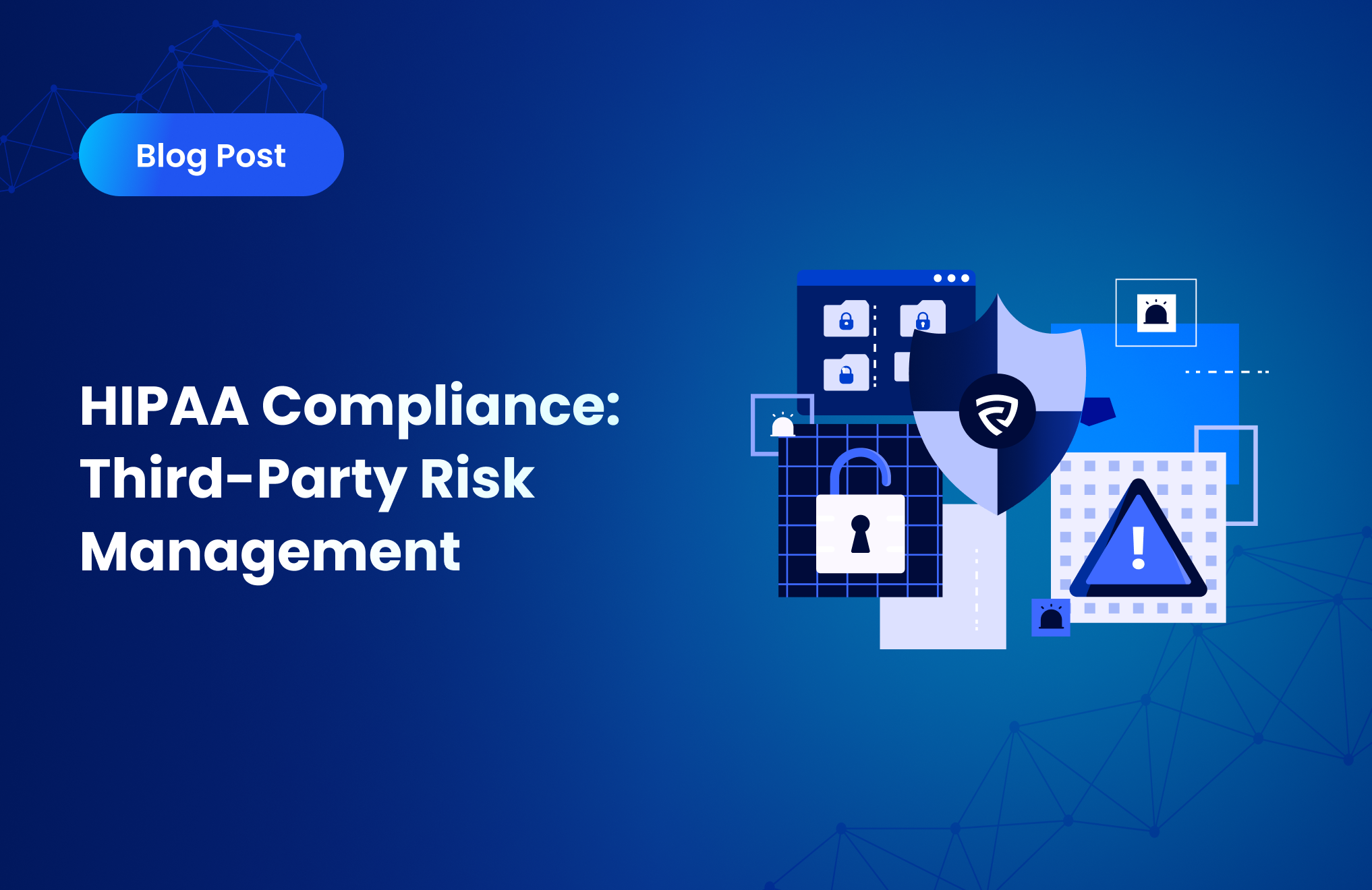The Ultimate Guide to Software Supply Chain Security

The Ultimate Guide to Software Supply Chain Security
Software supply chain security (SSCS) has become one of the most pressing challenges for modern organizations. With the proliferation of attacks on third-party software suppliers, open-source packages, and developer environments, businesses face growing exposure to cybersecurity risks that can disrupt operations, compromise sensitive data, and erode customer trust.
Traditional methods—such as patching vulnerabilities in finished applications—are no longer enough. Today’s attackers target the development pipeline itself, exploiting the relationships, tools, and dependencies that shape how software is built and delivered.
For CISOs, AppSec leaders, and risk managers, the supply chain is now a strategic point of entry that must be protected with the same rigor as production systems. This guide explores how to secure your software supply chain, integrate it into a third-party risk management framework, and align your approach with broader organizational objectives like vendor onboarding, compliance, and continuous monitoring.
Why Software Supply Chain Security Matters
High-profile incidents like SolarWinds and Log4Shell revealed that attackers don’t need to compromise a finished application to wreak havoc. By inserting malicious code or exploiting vulnerable dependencies, they can infiltrate organizations at scale.
Unlike conventional breaches, supply chain attacks often go unnoticed for months. They exploit trusted components and relationships, giving adversaries a stealthy advantage.
That’s why a proactive approach—integrating supply chain protections into your vendor risk management plan and DevSecOps practices—is now mission-critical.
What Is the Software Supply Chain?
The software supply chain includes every component, process, and tool involved in building, testing, deploying, and maintaining applications. This ecosystem spans:
- Open-source libraries and frameworks
- Commercial third-party components
- Package managers and registries
- Developer platforms and CI/CD pipelines
- Cloud distribution networks
Each element introduces potential risks. To manage them, organizations increasingly rely on an SBOM (Software Bill of Materials), which provides a transparent inventory of all dependencies. SBOMs support both compliance requirements and proactive risk mitigation, especially when paired with continuous monitoring of vulnerabilities.
Defining Software Supply Chain Security (SSCS)
SSCS encompasses the policies, controls, and practices designed to protect the integrity of software at every stage of its lifecycle. It includes:
- Securing code repositories against unauthorized changes
- Validating and hardening third-party dependencies
- Protecting build and integration pipelines
- Detecting malicious code or tampering early in development
- Maintaining full visibility through SBOMs and audit trails
For organizations that already manage vendor relationships, SSCS can be integrated into a broader third-party risk management framework, aligning technical controls with enterprise-wide risk policies.
The Role of Vendor Risk Management in SSCS
A strong vendor risk management plan doesn’t stop at financial health or contractual obligations. It must also address cybersecurity risks within the software supply chain.
Key intersections include:
- Vendor onboarding: Ensuring new suppliers meet security standards before being integrated into your development environment.
- Compliance alignment: Mapping software supply chain controls to frameworks like SOC 2, ISO 27001, or NIS2 to satisfy regulatory requirements.
- Continuous monitoring: Tracking third-party software, open-source components, and build environments for new vulnerabilities or suspicious changes.
When integrated, these measures create a unified defense strategy that protects not only your applications, but also your vendor ecosystem.
Key Threats to the Software Supply Chain
Understanding how attackers exploit supply chain weaknesses is essential for building effective defenses. Common threats include:
- Compromised developer environments – Attackers gaining access to laptops or credentials to inject malicious code.
- Source control platform compromises – Exploiting Git, SVN, or other SCM systems to tamper with repositories.
- CI/CD pipeline attacks – Altering builds or injecting vulnerabilities into deployment processes.
- Dependency confusion and typosquatting – Tricking developers into downloading malicious packages from public registries.
- Repo hijacking and starjacking – Taking over abandoned or popular repositories to distribute malware.
- Compromised package repositories – Uploading or swapping malicious artifacts in trusted registries.
Each of these tactics leverages trust relationships inherent in modern development practices, making them harder to detect than direct attacks on production systems.
Frameworks for Supply Chain Security: SLSA and SBOM
SLSA (Supply-chain Levels for Software Artifacts)
SLSA is a security framework designed to enforce the integrity of software artifacts. Its progressive levels—from automated builds (Level 1) to fully hermetic, reviewed processes (Level 4)—help organizations scale their defenses incrementally.
SBOM (Software Bill of Materials)
An SBOM provides transparency by listing all components within a piece of software. Maintaining accurate SBOMs helps organizations:
- Identify vulnerabilities in third-party dependencies
- Ensure compliance with government and industry regulations
- Support due diligence in vendor onboarding
- Enable continuous monitoring of evolving threats
Both SLSA and SBOMs are increasingly being mandated by regulators, including under U.S. Executive Order 14028, making them foundational to any third-party risk management framework.
Best Practices for Building a Software Supply Chain Security Strategy
- Integrate SSCS into Vendor Risk Management Plans
Treat your supply chain as an extension of your enterprise. Apply the same standards, audits, and monitoring you use for vendors. - Adopt Continuous Monitoring Tools
Automated scanning, threat intelligence feeds, and runtime insights help detect vulnerabilities and malicious code in real time. - Secure the Development Lifecycle (SDLC)
Protect CI/CD pipelines, enforce code reviews, and require multi-factor authentication for developer accounts. - Automate SBOM Generation
Ensure every software release includes an updated SBOM to streamline compliance and vulnerability management. - Educate and Empower Developers
Encourage secure coding practices and make security tools accessible, minimizing barriers to productivity. - Align with Compliance Frameworks
Map SSCS measures to SOC 2, NIS2, and other standards to strengthen your regulatory posture.
Continuous Monitoring: The Future of SSCS
The threat landscape is dynamic, and point-in-time checks are no longer enough. Continuous monitoring of supply chain components—dependencies, registries, developer tools, and cloud environments—ensures emerging risks are identified and addressed quickly.
This capability also enhances vendor oversight, making it easier to assess whether third-party partners are upholding their obligations under your vendor risk management plan.
Conclusion
Securing the software supply chain is no longer optional—it’s a business imperative. Organizations must treat it as part of their third-party risk management framework, aligning technical safeguards with enterprise-wide policies for vendor onboarding, compliance, and continuous monitoring.
By adopting tools like SBOMs, embracing frameworks like SLSA, and integrating SSCS into vendor governance, businesses can mitigate cybersecurity risks, protect their codebase, and build resilient digital ecosystems.
With the right strategy, you can safeguard not only your software, but also the trust of your customers, partners, and stakeholders.



.svg)
.svg)
.svg)
.svg)



.svg)
.svg)
.svg)
.svg)
.svg)
.svg)
.svg)
.svg)



